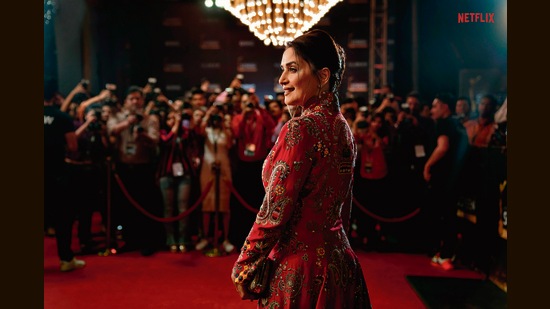Finally, a new age dawns for the Indian actress, says Anupama Chopra
It’s thrilling to see streaming platforms treat age an asset to be celebrated, rather than something to be camouflaged, and to see stories created for women across varied age groups.
Does Hindi cinema just not know what to do with women of a certain vintage, I wondered, as I watched the first episode of The Fame Game. This is an upcoming Netflix series in which Madhuri Dixit dominates the screen as Anamika Anand, a Bollywood superstar whose sudden disappearance reveals deep schisms beneath her seemingly perfect life of doting husband, children, gushing fans and flashbulbs.

The series pivots around Madhuri, who first dazzled audiences with her acting and dancing prowess more than three decades ago, in Tezaab (1988). The men she was paired with back then — Aamir Khan, Shah Rukh Khan, Salman Khan, Akshay Kumar — are still superstars, headlining projects. But Madhuri’s last film, Kalank, was in 2019. And the few she did in the years before that (perhaps with the exception of Abhishek Chaubey’s Dedh Ishqiya) did little justice to her talent or vast experience.
It seems like streaming might provide this stellar actor the opportunity to get her groove back, as it has done for so many leading ladies. Raveena Tandon shone in Aranyak (2021); Sushmita Sen blazed her way back after a five-year hiatus, with two seasons of Aarya (2020-21); Pooja Bhatt returned to acting after two decades, as the brittle Rani in Bombay Begums (2021); Karisma Kapoor was last seen in Mentalhood (2020), a 10-episode series about the travails of motherhood; and Lara Dutta’s latest streaming show, Hiccups & Hookups (2021), in which she plays a divorcee struggling to navigate modern relationships, dating apps and sex, was recently renewed for a second season.
Clearly streaming platforms, freed from constraints of the box office, are able to offer women across age groups roles that are complex and layered. Narratives are built around the actors much like films are built around Salman Khan. And age becomes an asset to be celebrated, not camouflaged — could a younger actor have brought the keen anguish of a grieving widow and mother to the role played by Sushmita in Aarya? I doubt it. As she said to me in an interview: “When you get older, you gain something that you never have in your 20s — experience. You have more depth and substance, and if you have depth and substance with some wrinkles and some lines, I believe it adds to your character.”
Film industries around the world are notoriously ageist. Mainstream Hindi cinema has traditionally been even more so than most, artfully relegating women over 35 to the sidelines and steadily casting women in their early 20s opposite men in their 50s (Akshay’s next film, Prithviraj, is the acting debut of former Miss World Manushi Chhillar, who is 30 years younger than him).
There are few mainstream filmmakers willing to explore stories about women in their prime. But I think streaming might be the saviour. Lara once told me that it was “liberating to be in your 40s because you really don’t have to give a damn”. And Madhuri once said, “The love affair between the camera and us has gone on for a very long time. All that’s left to prove now is how many different roles you can handle.”
Streaming platforms are showcasing this infinite variety of female actors — look at Supriya Pathak’s brilliant performance in Tabbar. It’s a thrilling time.
All Access.
One Subscription.
Get 360° coverage—from daily headlines
to 100 year archives.



HT App & Website






